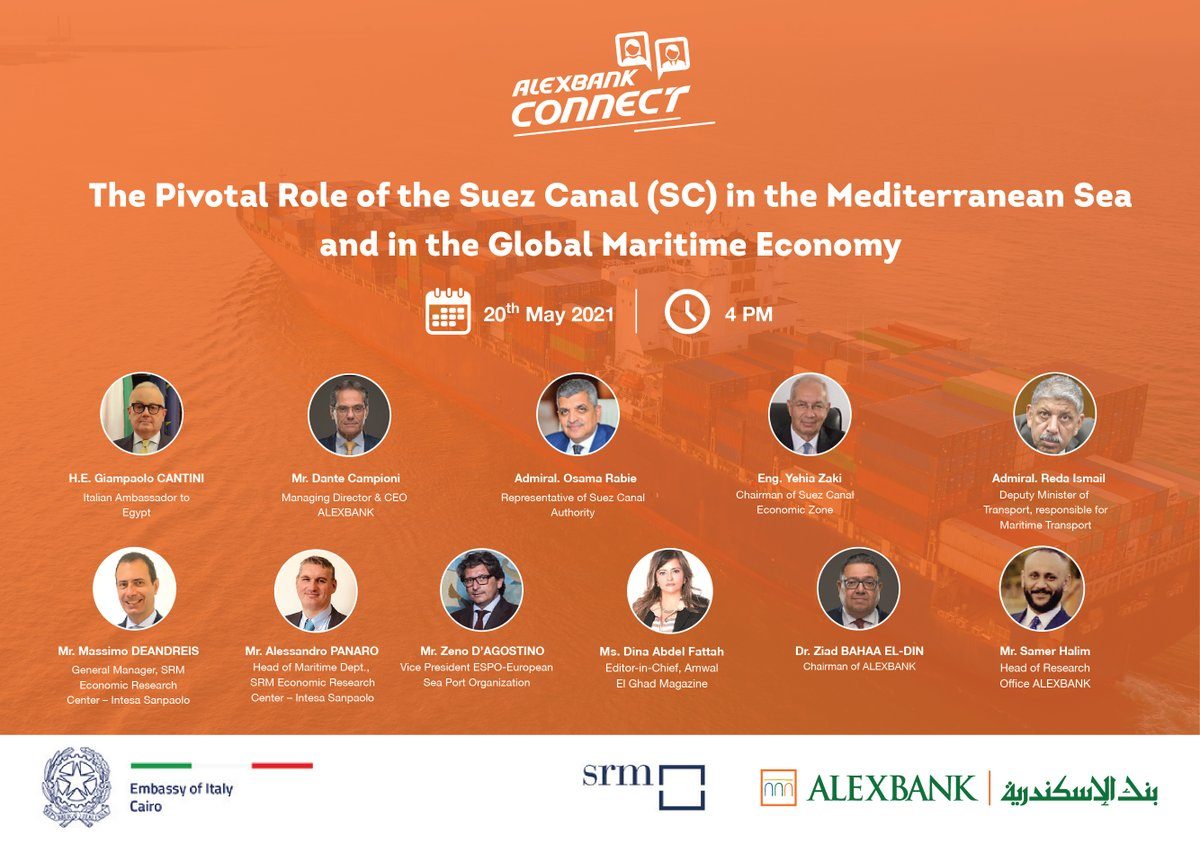For the past 6 years, ALEXBANK and SRM (Economic Research Centre belonging to Intesa Sanpaolo Group), INSME Member, have been working together to research and monitor the performance of Egypt’s biggest and one of the most important maritime and logistical nodes in the world: the Suez Canal. The research has fruited into 3 reports; one published in 2015, another in 2018 and this 3rd report published in 2021. This new publication analyses the impact that the severe Covid-19 pandemic has had and still having on maritime and global trades as well as the way these have affected the dynamics of the Canal.
Suez has shown remarkable resilience to the effects of the pandemic, exceeding 1 billion tonnes of cargo in 2020 and with 18,829 ships transited. Even in difficult economic times, it has remained a strategic hub for traffic in the Mediterranean, still accounting for 12% of world traffic (7-8% of oil traffic).
The Canal is important for the Egyptian economy because of the revenue generated by ship passages and the goods handled in the ports close to Suez. The Canal’s revenues recorded the third highest annual revenue in the history of the Canal. The revenues are currently at $5.61 bn, down 3.3% from $5.8 bn the previous year. ($5.3 bn in 2014).
In March 2021, the case of the Ever Given, a megaship of over 20,000 teus which ran aground in the Suez Canal blocking passage for several days, clearly demonstrated that the dynamics of international maritime trade are highly dependent on this strategic crossroads. It took only six days (11 days in total for the return to normality) and 422 ships stopped at the entrances to the Canal to raise debates on many issues such as naval gigantism or the search for alternative routes, as well as problems such as port congestion, the rise in oil prices and freight rates.
(For further information: Alex Bank, SRM “The Suez Canal. Evolution of traffic and current trend in ship movement during the Covid-19 pandemic, competitiveness indicators and the role of industrial and infrastructural development projects”, The Permanent Observatory on Maritime Transports and Logistics, www.srm-maritimeeconomy.com)
Source: Alessandro Panaro


